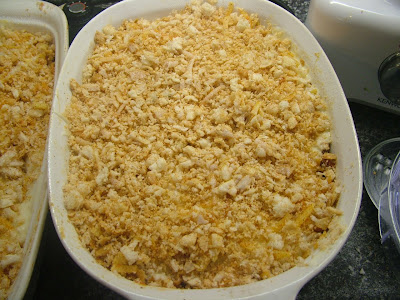The mushroom tour was organised as part of the Cool Flavours Festival, an annual foodie festival in the Southern Highlands. Directions were a little imprecise, but we managed to find the swimming pool car park that was the meeting point. We had to travel by mini-bus to the actual tunnel, which was only about 500 meters away but, because it was alongside the railway track, we weren't allowed to walk.
Once the mini-bus had done three trips to drop everyone off, (to pass the time, Mum and I tried to name as many mushroom varieties as we knew) Noel Arrold introduced himself and his business - Li-Sun Exotic Mushrooms. Noel started his working life as a microbiologist before taking over a disused railway tunnel between Bowral and Mittagong to start cultivating exotic mushrooms. Starting with Swiss Browns over 20 years ago, then moving to exotic Asian mushrooms like shiitake, oyster, shimejeii and wood ear, he now supplies restaurants (including Tetsuya's) and wholesalers with around 1,500 kilos a week of up to eight different varieties. Some of these varieties are grown at the laboratory which is in a different location to the railway tunnel.
Growing mushrooms underground is not new. The first mushrooms grown in tunnels in Australia were under Circular Quay in the 1930s. Mushrooms have also been grown in the catacombs under Paris and in 12 square kilometres of former limestone mine in Pittsburgh, USA. This tunnel was built in 1886 and has been unused by the railway since 1919. After being used as a munitions store in World War 2, it has been revitalised as a mushroom farm.
Although the tunnel is a stable 16 degrees, it felt warm and humid after the chilly start to the day. It was very clean with an earthy smell. Row upon row of bottles, some with little mushrooms peering out, were at the beginning of the 650 metre tunnel.
 |
| Shimejii mushrooms |
 |
| Two different types of enoki mushrooms |
 |
| Nameko mushrooms |
Some of the mushrooms are grown in these bottles, some on logs made of sawdust, others in heavy plastic bags - all are inoculated with the specific mushroom spore that have been gathered in the laboratory.
 |
| Racks of logs inoculated with shiitake mushrooms |
 |
| Hot pink oyster mushrooms - a variety from South America |
Most of the mushrooms grown here are originally from Asia, where they grow naturally. Mushrooms play an important part in the carbon cycle by breaking down the trees in the forests there. Mushrooms were first cultivated 930 years ago outside Shanghai. It is now an industry employing ten million people.
 |
| Oyster mushrooms |
Mushrooms that need specific tree types to grow under, like porcini, chantarelle and morel cannot be grown here and are imported as dried mushrooms.
 |
| Shimejii |
We finished our morning in the Southern Highlands with a visit to Tennessee Orchards at Yerrinbool, stopping to buy a box of deliciously tangy Lady Williams and a bottle of clear, flavourful apple juice.
What's the most exotic mushroom that you've used in cooking?


























